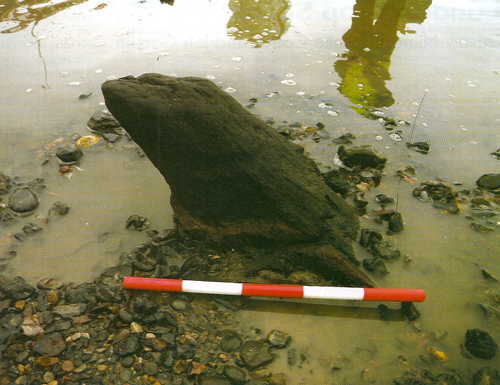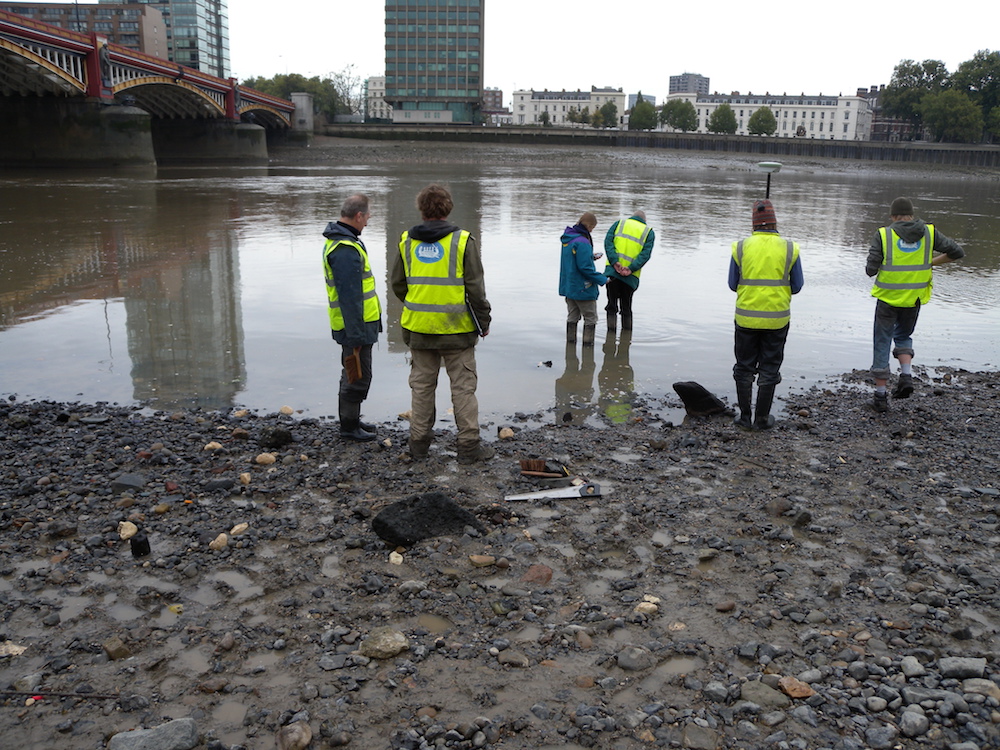Vauxhall: Prehistoric Sites
We are lucky, in one sense, that the Vauxhall foreshore is being eroded by a very aggressive tidal scour, in turn caused by changes to the river flow caused by new buildings encroaching into the river. Two major finds have been revealed - one on each side of Vauxhall Bridge.
London's Oldest Structure
First, Vauxhall is situated just south of the Thames at the point at which the river first becomes fordable. Also, it was close to the furthest point upstream at which the river was tidal. The combination of these two factors would make Vauxhall a sort of land/sea transport hub, and hence a very important centre for Bronze Age society. This is because the Bronze Age was the period - from about 2300 to 700 BC - when metal first began to be widely used in Britain, possibly as a result of the increase in contact with Europe. Society then appears to have been divided into chiefdoms based around a largely agricultural economy. Trade between these groups - and, indeed, more widely with continental Europe - was well developed. Transport by river and sea, using flat-bottomed boats that could be easily beached and navigate far inland, was in particular well established. Vauxhall may therefore have been a sort of Bronze Age port, reached by boats coming up on the tide.
Two Bronze Age spearheads were found alongside the remains of the wooden structure. The way that the spearheads had been driven deep into the foreshore suggested that they had been placed there deliberately, probably as some sort of 'votive' or ritual offering, rather than simply lost or abandoned in battle. This in turn suggests that the structure at Vauxhall may have had both a practical and a more symbolic purpose. As well as serving as a bridge or jetty of some sort, it may well have been a ritual or religious site.
If you want to learn more about the archeology of the Thames, you should visit the Thames Discovery website.




